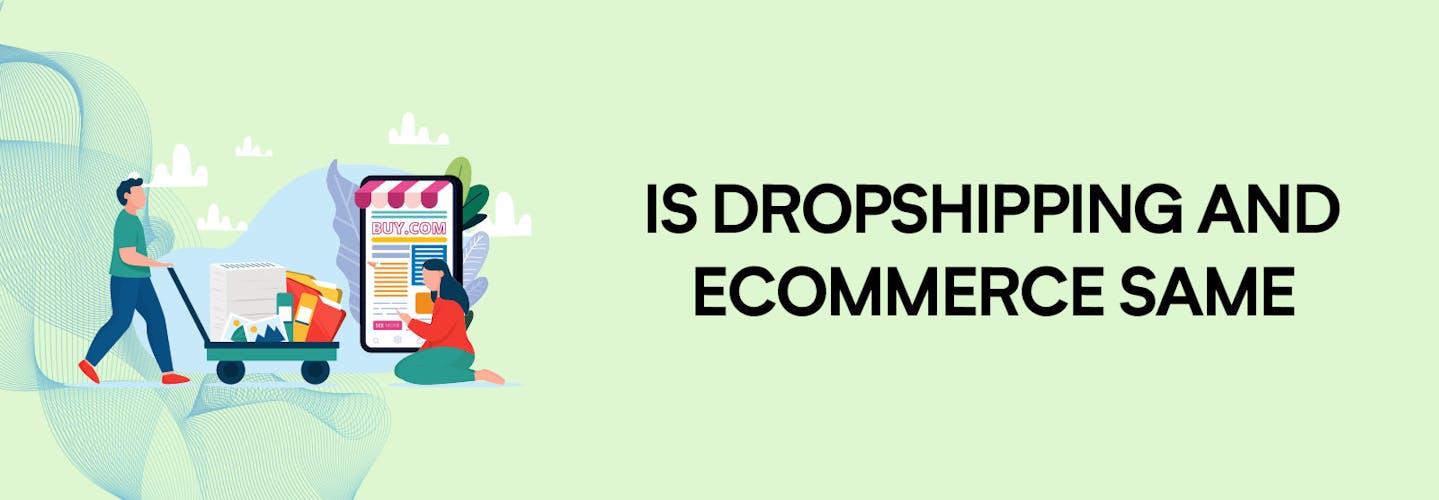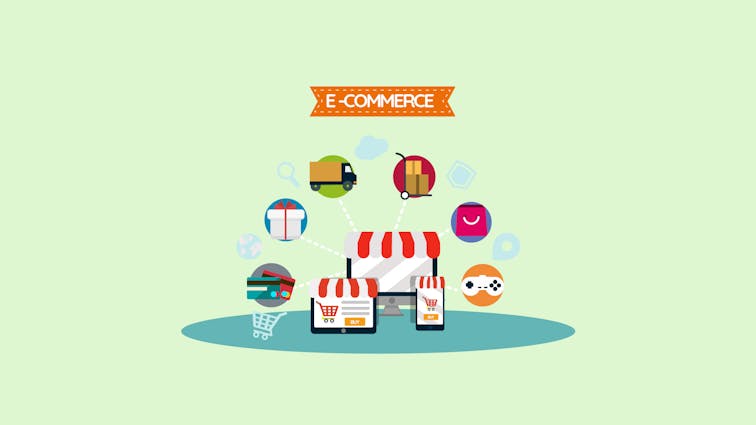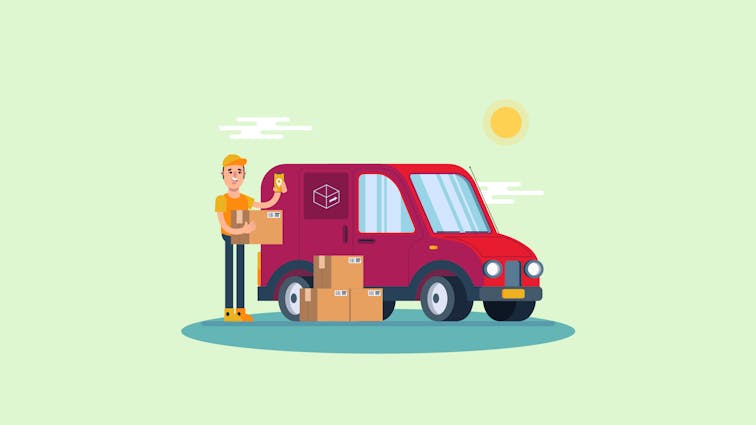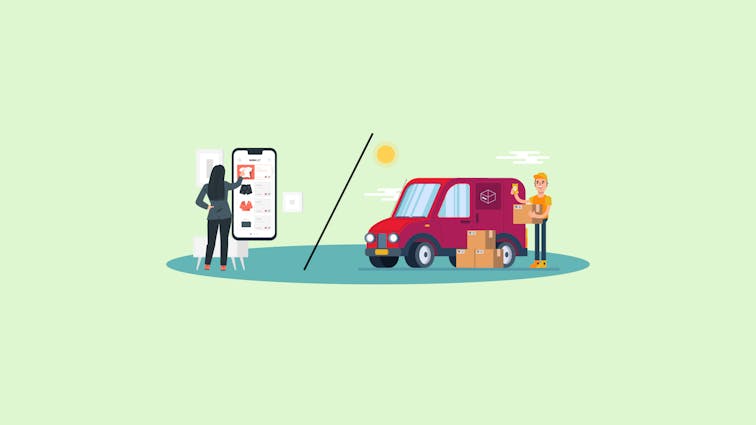
Is Dropshipping And Ecommerce The Same Thing
Are you considering entering the world of online business?
You might be weighing up the differences between ecommerce and dropshipping as the prosperity of your online venture heavily hinges on choosing the right business model.
The digital marketplace showcases a range of business models for online selling. Ecommerce and dropshipping are two significant models.
According to Statista, The global dropshipping market size was estimated at 128.6 billion U.S. dollars in 2020 and is expected to grow to 476.1 billion U.S. dollars by 2026. It’s predicted to maintain a steady growth trajectory in the coming years.
You’re curious, aren’t you? Great! Let’s delve deeper and learn all about the nuances between ecommerce and dropshipping.
Definition of Ecommerce
Ecommerce, or electronic commerce, is a term that you’ve probably heard before. But what does it mean?
Simply put, Ecommerce is the buying and selling of goods or services using the internet.
It’s the online store where you buy your favorite books, the digital marketplace where you find unique handmade crafts, and so much more.
Definition of Dropshipping
Now, let’s talk about Dropshipping. This is a specific model of Ecommerce where the retailer doesn’t keep goods in stock.
Instead, when a customer makes a purchase, the order is sent to a third-party supplier. The supplier then ships the product directly to the customer. So, the retailer never actually handles the product.
Brief Comparison of Ecommerce vs Dropshipping
At first glance, Ecommerce and Dropshipping might seem like two sides of the same coin. And in a way, they are.
Dropshipping is a subset of Ecommerce. But the key difference lies in the inventory management.
In a traditional Ecommerce model, the retailer holds the inventory. In Dropshipping, the retailer doesn’t keep any stock, which can significantly reduce upfront costs.
Understanding Ecommerce

Now that we’ve defined our terms, let’s dive deeper into the world of Ecommerce.
The Concept of Ecommerce
Ecommerce is all about transactions made online. Whether it’s a small business selling handmade jewelry or a large corporation selling a wide range of products, if it’s happening online, it’s Ecommerce.
It’s a powerful tool that allows businesses to reach a global audience, right from their own homes.
But How Ecommerce Works ?
It’s all about the digital journey. A customer visits an online store, browses the products, adds their chosen items to a virtual shopping cart, and then checks out, making a payment via the website.
The business then fulfills the order, either by shipping the product from their own inventory (traditional Ecommerce) or by forwarding the order to a third-party supplier (Dropshipping).
Pros and Cons of Ecommerce
Ecommerce, like any business model, has its advantages and drawbacks. Here are some key points to consider:
Pros
- Global reach: Ecommerce allows businesses to sell to customers all over the world without the need for physical stores.
- Low maintenance costs: Once an online store is set up, it’s relatively inexpensive to keep it running compared to a brick-and-mortar store.
- Convenience: Customers can shop anytime, anywhere, making it easy for them to find and purchase products at their own convenience.
Cons
- High competition: Because there are countless online stores available, competition is immense, making it difficult for new sellers to establish themselves.
- Lack of personal interaction: Online shopping doesn’t provide the same personal experience that physical stores can offer, which may deter some customers.
- Security issues: Ecommerce sites can be vulnerable to cyber attacks, requiring businesses to stay vigilant in protecting customer information.
Read More: 5 Types of Ecommerce Business Models That Works
Understanding Dropshipping

Let’s now explore the ins and outs of Dropshipping.
The Concept of Dropshipping
Dropshipping is a unique Ecommerce model that allows retailers to sell products without keeping the inventory themselves.
This approach relies on partnerships with third-party suppliers, where products are only ordered once a customer actually purchases them from the retailer.
How Dropshipping Works
When a customer places an order, the retailer passes along the customer’s information and order details to the supplier.
The supplier then packs and ships the product directly to the customer. The retailer earns a profit from the difference between their marked-up price and the wholesale price from the supplier.
Pros and Cons of Dropshipping
Dropshipping comes with its own set of advantages and drawbacks, which are worth considering when evaluating this business model:
Pros
- Low startup costs: Since retailers don’t need to invest in inventory, Dropshipping can be a more affordable option compared to traditional Ecommerce.
- Flexibility: Retailers can quickly and easily add or remove products from their online store without having to manage inventory themselves.
- Scalability: As a retailer’s business grows, their Dropshipping supplier can often handle the increased order volume, making it easier to scale.
Cons
- Lower profit margins: As retailers rely on suppliers, their profit margins may be narrower than a traditional Ecommerce model due to supplier prices and fees.
- Potential for supply chain issues: Retailers are at the mercy of their suppliers, meaning any delays or inconsistencies in product quality can directly impact the retailer’s reputation.
- Dependency on suppliers: A strong, reliable supplier-relationship is crucial in Dropshipping, and any issues with the supplier can have a negative effect on the retailer’s business.
Read More: The Ultimate Guide to Starting a Dropshipping Business in India
Key Differences between Ecommerce vs Dropshipping

Understanding the differences between Ecommerce and Dropshipping is vital for choosing the right business model for one’s needs.
Here are the key distinctions to keep in mind:
- Inventory management: In traditional Ecommerce, the retailer maintains an inventory of products for fulfillment, whereas in Dropshipping, the retailer relies on a third-party supplier to stock and ship products on their behalf.
- Upfront costs: Ecommerce usually involves higher startup costs due to investments in inventory, while Dropshipping requires minimal upfront expenditure since no inventory is held by the retailer.
- Profit margins: Ecommerce often boasts higher profit margins, as the retailer has more control over product pricing, while Dropshipping margins may be narrower due to reliance on supplier pricing.
- Control over product quality: In Ecommerce, retailers have direct control over product quality and can ensure it meets their standards. In Dropshipping, this control is limited as product quality is dependent on the third-party supplier.
- Flexibility in product offering: With Ecommerce, changing or updating product offerings requires managing inventory and may come with additional costs. In Dropshipping, retailers have more flexibility to add or remove products from their online store without worrying about inventory management.
Similarities between Ecommerce and Dropshipping
Both Ecommerce and Dropshipping share several similarities, as they fall under the broader umbrella of online retail. Here are some key aspects in which they overlap:
- Online presence: Both Ecommerce and Dropshipping businesses rely on an online store to showcase and sell products, without the need for a physical space.
- Global audience: Both models enable businesses to reach customers from all around the world, expanding their potential customer base.
- Digital marketing: Both Ecommerce and Dropshipping businesses depend heavily on digital marketing strategies, like social media advertising, email marketing, and search engine optimization, to drive traffic to their online stores and generate sales.
- Customer convenience: Ecommerce and Dropshipping provide customers with the convenience to shop from anywhere, anytime, enabling them to purchase products according to their preferences and needs.
- Role in Online Retail: Both Ecommerce and Dropshipping play crucial roles in the world of online retail. They provide platforms for businesses to sell their products to a global audience without the need for a physical storefront.
- Use of Technology and Internet: Ecommerce and Dropshipping both heavily rely on technology and the internet. They require the use of online platforms, digital payment systems, and internet marketing strategies to reach and serve customers.
Choosing Between Ecommerce and Dropshipping
So, how do you choose between Ecommerce and Dropshipping? It depends on a variety of factors.
Factors to Consider When Choosing Between Ecommerce and Dropshipping
When deciding between Ecommerce and Dropshipping, you need to consider factors such as your budget, your ability to manage inventory, and your comfort level with risk.
Dropshipping can be a great choice if you want to start an online business with minimal upfront costs. However, it also comes with lower profit margins and less control over shipping and handling.
Suitability of Each Model for Different Types of Businesses
The choice between Ecommerce and Dropshipping also depends on the type of business you’re running.
If you’re selling unique, handmade items, traditional Ecommerce might be the way to go.
On the other hand, if you’re looking to sell a wide range of products without the hassle of inventory management, Dropshipping could be a better fit.
Case Studies
Successful Ecommerce Businesses
- Amazon: Amazon is arguably the most successful Ecommerce business in the world. Starting as an online bookstore, it has expanded into selling a wide variety of products, making it a one-stop-shop for many consumers.
- Etsy: Etsy is a unique Ecommerce platform that focuses on handmade or vintage items and craft supplies. It has empowered countless small businesses and individual creators to sell their products to a global audience.
Successful Dropshipping Businesses
- Zappos: While not a pure dropshipping business, Zappos, an online shoe and clothing retailer, started with a dropshipping model. They would order the shoes from the manufacturer only after a customer had placed an order, minimizing their inventory risk.
- Wayfair: Wayfair is a successful online furniture retailer that uses a dropshipping model. They work with thousands of suppliers who ship products directly to customers, allowing Wayfair to offer a vast selection without maintaining a large inventory.
Conclusion
As we’ve explored, both Ecommerce and Dropshipping offer unique opportunities for businesses to thrive in the digital world.
They share similarities such as their role in online retail, the use of technology, and the importance of customer service. Yet, they also have distinct differences, particularly in terms of inventory management.
Ecommerce, the broader term, refers to any transaction conducted online. It offers businesses the chance to reach a global audience and operate around the clock. However, it also comes with its own set of challenges, including competition and the need for technical knowledge.
Dropshipping, on the other hand, is a specific model of Ecommerce that eliminates the need for inventory management.
It’s a great option for those looking to start an online business with minimal upfront costs. But it also has its downsides, such as lower profit margins and less control over shipping and handling.
Choosing between Ecommerce and Dropshipping isn’t a one-size-fits-all decision. It depends on various factors, including your budget, your business type, and your comfort level with risk.
Successful businesses have been built using both models, as demonstrated by giants like Amazon and Zappos.
In the end, the key to success in either Ecommerce or Dropshipping lies in understanding your market, offering excellent customer service, and continuously adapting to changes in the digital landscape.
Whether you choose Ecommerce or Dropshipping, the potential for success is vast in the ever-evolving world of online business.
FAQ’s:
1. What is the difference between Ecommerce and Dropshipping?
Ecommerce is a broad term that refers to any type of commercial transaction conducted online. Dropshipping is a specific model of Ecommerce where the retailer doesn’t hold inventory but instead transfers customer orders to a third-party supplier.
2. How much money do you need to start dropshipping?
The initial cost of starting a dropshipping business can vary widely. It can be relatively low-cost since you don’t need to purchase inventory upfront. However, you’ll need to account for costs like setting up your website, marketing, and potentially purchasing a domain name.
3. What mistakes should I avoid with dropshipping?
Common mistakes include not investing enough in marketing, choosing the wrong supplier, neglecting customer service, and not analyzing your competition and market trends.
4. Who pays for shipping when you dropship?
In a dropshipping model, the cost of shipping is usually included in the price of the product and paid by the customer. However, the retailer can choose to offer free shipping as a sales strategy, absorbing the cost themselves.
5. Can you start dropshipping with no money?
While dropshipping requires less upfront investment than traditional retail, it’s not typically possible to start with no money at all. You’ll likely need funds for website setup, marketing, and other business expenses.








